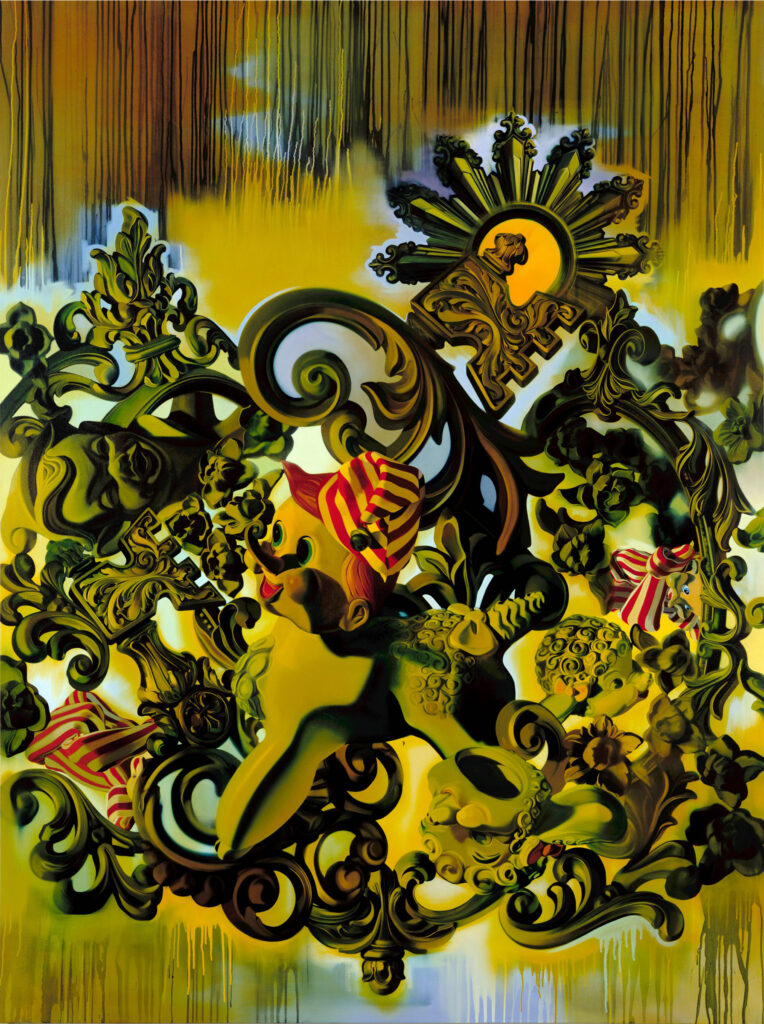Brett Reichman at the Orange County Museum of Art
LA Times – July 14, 1999
by Cathy Curtis
Even a hasty look at the museum’s sampler of Brett Reichman’s recent paintings reveals them to be tortuously clever pieces of theater, with old-fashioned children’s toys as the perversely “dumb” actors. The players are elves and pixies with limbs made of flannel striped in the cozy, candy-ribbon colors of red and white or green and white.
Twisted into contorted positions suggestive of acts of bondage, the dolls’ limbs either swell or flatten out as if drained of life. Glimpsed only in bits and pieces, the dolls’ perky little faces are either playing hide-and-seek or slowly being asphyxiated. Even the harsh gleam of a silver “jingle bell” used as trimming looks ominous, its tiny hole curiously prurient.
Reichman achieves these effects partly by shoving the vivid images to the surface of the picture. The writhing tangle of “Parallelism” has an almost tactile effect.
He also uses strong contrasts of light and shadow, as if mockingly recasting a child’s clear-cut sense of good and evil. In “Threefold,” the bold shadow cast by the trio of entwined figures creates a silhouette–resembling the underside of an animal–that mingles innuendo with foreboding.
The worried face of one of the romping elves also presages more than a mild morning-after regret. Reichman, who is in his late 30s and lives in the Bay Area, uses the toys as complex surrogates for aspects of gay culture. The specter of AIDS hovers over this work, along with a welter of other issues involving trust, affection, illusions and the co-mingling of pleasure and pain.
Most ambitious of the six paintings in the show is “A Painting That Tells a Story,” a large canvas in which the dolls become part of an elaborate ornamental carving. Reichman wittily uses his technical skills to make connections between the tropes of decorative art and toy design.
The Pinocchio-like extension on a doll’s nose echoes a rococo flourish on the carving, which in turn links up with a frozen wave of hair on the forehead of a sculpted pixie’s face and the curling tip of a doll’s stocking cap.
The symbolic story is about the sacrifice of innocence and the end of a fabled era of freedom in the gay community. One of the two severed lambs’ heads is upside-down, as if awkwardly pressed into service as a funerary urn. Against a half-blurred background of dripped paint (are the heavens weeping?), a sun-like mirror sets, and the once lively pixie has grown stone cold.
In other hands, all this might be merely high camp. But Reichman invests his tableaux with what can only be called over-the-top sublimity. The painting manages to be simultaneously ironic and painfully sincere, capturing something of the uncertain tenor of a world caught between bitter knowledge and nostalgia.
